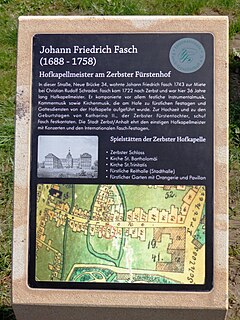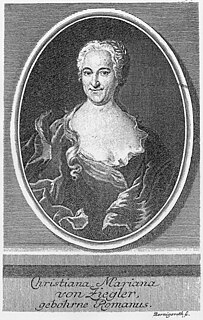Related Research Articles

The oboe is a type of double reed woodwind instrument. Oboes are usually made of wood, but may also be made of synthetic materials, such as plastic, resin, or hybrid composites. The most common oboe plays in the treble or soprano range. A soprano oboe measures roughly 65 cm long, with metal keys, a conical bore and a flared bell. Sound is produced by blowing into the reed at a sufficient air pressure, causing it to vibrate with the air column. The distinctive tone is versatile and has been described as "bright". When the word oboe is used alone, it is generally taken to mean the treble instrument rather than other instruments of the family, such as the bass oboe, the cor anglais, or oboe d'amore.

A reed is a thin strip of material that vibrates to produce a sound on a musical instrument. Most woodwind instrument reeds are made from Arundo donax or synthetic material. Tuned reeds are made of metal or synthetics. Musical instruments are classified according to the type and number of reeds.

The cor anglais, or English horn in North America, is a double-reed woodwind instrument in the oboe family. It is approximately one and a half times the length of an oboe.

Johann Friedrich Fasch was a German violinist and composer.

Léon Jean Goossens, CBE, FRCM was an English oboist.
The oboe d'amore, less commonly hautbois d'amour, is a double reed woodwind musical instrument in the oboe family. Slightly larger than the oboe, it has a less assertive and a more tranquil and serene tone, and is considered the mezzo-soprano of the oboe family, between the oboe (soprano) and the cor anglais, or English horn (alto). It is a transposing instrument, sounding a minor third lower than it is notated, i.e. in A. The bell is pear-shaped and the instrument uses a bocal, similar to but shorter than that of the cor anglais.

Oboe was a British aerial blind bombing system in World War II, based on radio transponder technology. The system consisted of a pair of radio transmitters on the ground, which sent signals which were received and retransmitted by a transponder in the aircraft. By comparing the time each signal took to reach the aircraft, the distance between the aircraft and the station could be determined. The Oboe operators then sent radio signals to the aircraft to bring them onto their target and properly time the release of their bombs.

Heinz Robert Holliger is a Swiss virtuoso oboist, composer and conductor. Celebrated for his versatility and technique, Holliger is among the most prominent oboists of his generation. His repertoire includes Baroque and Classical pieces, but he has regularly engaged in lesser known pieces of Romantic music, as well as his own compositions. He often performed contemporary works with his wife, the harpist Ursula Holliger; composers such as Berio, Carter, Henze, Krenek, Lutosławski, Martin, Penderecki, Stockhausen and Yun have written works for him. Holliger is a noted composer himself, writing works such as the opera Schneewittchen (1998).
The bass oboe or baritone oboe is a double reed instrument in the woodwind family. It is about twice the size of a regular (soprano) oboe and sounds an octave lower; it has a deep, full tone somewhat akin to that of its higher-pitched cousin, the English horn. The bass oboe is notated in the treble clef, sounding one octave lower than written. Its lowest note is B2 (in scientific pitch notation), one octave and a semitone below middle C, although an extension may be inserted between the lower joint and bell of the instrument in order to produce a low B♭2. The instrument's bocal or crook first curves away from and then toward the player (unlike the bocal/crook of the English horn and oboe d'amore), looking rather like a flattened metal question mark; another crook design resembles the shape of a bass clarinet neckpiece. The bass oboe uses its own double reed, similar to but larger than that of the English horn.

A double reed is a type of reed used to produce sound in various wind instruments. In contrast with a single reed instrument, where the instrument is played by channeling air against one piece of cane which vibrates against the mouthpiece and creates a sound, a double reed features two pieces of cane vibrating against each other. The term double reeds can also refer collectively to the class of instruments which use double reeds.

The oboe da caccia, also sometimes referred to as an oboe da silva, is a double reed woodwind instrument in the oboe family, pitched a fifth below the oboe and used primarily in the Baroque period of European classical music. It has a curved tube, and in the case of instruments by Eichentopf, a brass bell, unusual for an oboe.
The piccolo oboe, also known as the piccoloboe and historically called an oboe musette, is the smallest and highest pitched member of the oboe family. Pitched in E♭ or F above the regular oboe, the piccolo oboe is a sopranino version of the oboe, comparable to the E♭ clarinet. It is most commonly found in early 20th-century marching band music, and the occasional rare chamber music ensembles or contemporary compositions.

Albrecht Mayer is a German classical oboist. The principal oboist of the Berlin Philharmonic, he is internationally known as a soloist and chamber musician and has made many recordings.
Howarth of London is a company specialising in the manufacture and retail of woodwind instruments and associated accessories. The company was formed in 1948 when its first oboe was produced, and continues to produce instruments today. The first oboe, serial number 1001, was purchased by Edward Selwyn, who at the time was principal oboist for the BBC Symphony Orchestra. Today the Howarth XL, the professional model, is played by soloists and orchestral players around the world, including Gordon Hunt, Roy Carter, Richard Woodhams, Elaine Douvas, Martin Schuring and Emily Pailthorpe.
The contrabass oboe is a double reed woodwind instrument in the key of C or F, sounding two octaves or an octave and a fifth (respectively) lower than the standard oboe.

In music, a Catalan shawm is one of two varieties of shawm, an oboe-like woodwind musical instrument played in Catalonia in northeastern Spain.

The Oboe Concerto No. 3 in G minor was composed by George Frideric Handel for oboe, orchestra and basso continuo, possibly in 1704-1705, when he was still in Hamburg. It was first published in Leipzig in 1863 in which it was described as a work from 1703. No other source for the work is known. Other catalogues of Handel's music have referred to the work as HG xxi, 100; and HHA iv/12,3.

Sie werden euch in den Bann tun, BWV 183, is a church cantata by Johann Sebastian Bach. He composed it in Leipzig for Exaudi, the Sunday after Ascension, and first performed it on 13 May 1725. The work includes some unusual woodwind scoring, two oboes da caccia and two oboes d'amore.
The Canonic Trio Sonata in F major is a short piece by Johann Sebastian Bach, catalogued as BWV 1040. The instrumentation is for oboe, violin, and basso continuo. Played adagio, the 27-measure, common time piece is less than two minutes long.